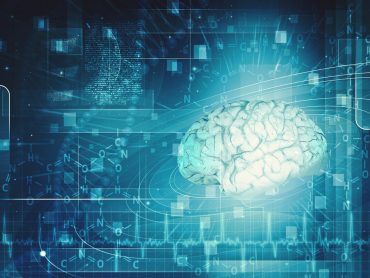
As you understand what AI, ML, predictive and prescriptive analytics are, you will see what analytics you need in your organization and how each type can help you.
There is plenty of confusion about which is better, predictive analytics, machine learning (ML), or artificial intelligence (AI). Which one should a company choose to use? The short answer is, you shouldn’t choose. Each of these aspects of data analysis may be useful to your company, and they have strong relationships with each other. The more detailed answer requires a deeper understanding of what these terms mean and how they relate to each other.
Defining the Options: Predictive analytics, ML, and AI
Predictive analytics is analyzing past events to forecast what might happen next. By understanding the past trends thoroughly and analyzing what factors contributed to those trends, we can predict how current factors will affect the future with some level of accuracy. While it’s never certain – predictive analytics is far more often correct about future predictions than simply relying on human experience or hunches. Predictive analytics provides probable answers to questions like Will demand for my product be higher next month? Will a part in this machine fail in the next year? Will next quarter’s profits be lower than last year?
Predictive analytics is usually contrasted with descriptive and prescriptive analytics. Descriptive analytics describes what is currently happening or what has happened. Whilst prescriptive analytics involves analyzing past events to recommend what decision should be made next.
Naturally, trying to predict the future is considerably harder and often requires more data to be reasonably accurate a fair amount of the time. All of these require careful analysis of data, but in general, descriptive analytics is the simplest. Prescriptive analytics goes a step further, is that much more complex, and often requires even more data and even more intense forms of analysis.
Machine learning (ML) is a process that uses mathematical models called algorithms to make sense of data in one way or another. The math may determine things like which data should be grouped together because it is similar, or what patterns exist in data that are not easy for a human to find, or what data factors influence a change in another data set. Machine learning gets its name because a single mathematical algorithm may be used for a wide variety of purposes. It is the data that determines the outcome, not a programmer who writes code instructions. Different data will indicate to the algorithm different things, teaching the ML model about itself and data like it. Hence, the machine “learns” from the data.
The more data that can be provided to train an ML algorithm, the more accurate the ML model will become, the more it will learn about that data. It often requires a LOT of data to make a good ML model, and it often takes a powerful computational engine to train the model with all of that data.
Once trained, an ML model can understand a dataset to the point where it may be used to predict where it will go from here (predictive analytics), or it may find patterns in data that indicate what action would affect the data in a desirable way (prescriptive analytics). So, machine learning is a sophisticated method of data analysis that can be used for both predictive and prescriptive analytics.
Artificial Intelligence (AI) is a general term that indicates any form of technology where a machine mimics the capabilities of a person. An example is natural language processing (NLP), where you speak to a machine in your own natural language, and the machine translates that into some form of instruction. It may execute that instruction, perhaps finding information for you, and then it may provide the answer back to you also in your own language (Natural Language Generation (NLG)).
Artificial intelligence also includes robotics and automation, where a machine recognizes a certain condition, either via coded instructions or from a pattern it recognizes due to ML, and does something similar to something a human would do under those conditions.
Making a Decision
So, back to the original question: Which is better, AI, ML, or predictive analytics, and what do I choose? You might as well ask which is better – a seed, an apple, or a tree. They are all interrelated, and which you use depends on your need. If I needed to grow something next spring, a seed would work best. If you were hungry now, an apple would be the clear choice. If you wanted shade, the tree would definitely be the way to go. But if you plant the seed, it will grow into a tree that bears apples, so they are all part of each other.
Based on your business requirement, you will choose what you need.
For example, if your business is manufacturing, you might use ML to analyze the sensor data from the components of the manufacturing machines to determine if there’s a pattern that predicts (predictive analytics) when a component will break soon. Then, you might have that machine automatically stop before it breaks, and send a signal recommending (prescriptive analytics) that you’ll replace a certain part. This preventative maintenance system would be a good example of artificial intelligence in practical use.
Another example might be if you were an online retailer. You might use descriptive analytics to determine that there are a large number of blue sweaters in your inventory. Then you might use machine learning to find the group of people who buy from you who tend to like blue clothing and live in an area that will get chilly soon, so they are likely to need a sweater in the near future (predictive analytics). You might then automatically recommend (prescriptive analytics) a blue sweater to them the next time they are online, especially if they purchase blue pants or maybe gloves. This is another good example of artificial intelligence used in business.
Accuracy in Time to Act
As you come to understand that AI, ML, predictive and prescriptive analytics aren’t just buzzwords invented to sound complex, you will often begin to see what analytics you need in your organization and how each type can help you. When you get ready to put advanced analytics into practice, remember these three things that will help you make it work.
- Accuracy – Using all available data vastly improves the accuracy of ML models. Don’t settle for taking a sample. Make sure that your technology and methods allow full analysis of all relevant available data. Also, over time ML models become less and less accurate as data and conditions change. Be sure to manage, measure accuracy, retrain, and update models as often as necessary to maintain the highest possible accuracy.
- Action – The best information, prediction, or recommendation in the world will be worthless if you do not take appropriate action in the moment when it will do the most good.
- Automation – Allow the machine to do what it does best. Automated monitoring, analytics, and sometimes even automatically triggered actions can take best advantage of rapidly changing business situations.
The more advanced forms of analytics can provide companies with a huge competitive edge over their competitors who don’t use them yet. Understanding the terms and what they mean in the context of your business is the first step to reaping the benefits.




























